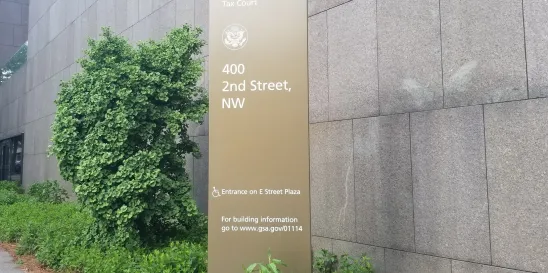The stream of cases challenging disallowance of research tax credits continues in the Tax Court with Phoenix Design Group, Inc. v. Commissioner.[1] The taxpayer in Phoenix Design designs mechanical, electrical, and plumbing systems incorporated into medical laboratories, research buildings, and educational facilities. It claimed research tax credits for the design work for these systems, which the IRS disallowed. Trial in the Tax Court is pending.
A taxpayer must satisfy a four-part test to be entitled to the research tax credit.[2] This alert discusses the first test, which requires a taxpayer to incur “research or experimental expenditures” within the meaning of IRC §174(a) (“Section 174”).[3]
Section 174 was part of the recodified 1954 Internal Revenue Code. Section 174 does not define “research or experimental expenditures.” On October 4, 1957, The Treasury Department published a brief regulatory definition of research or experimental expenditures, which provided in relevant part:
“§ 1.174-2 DEFINITION OF RESEARCH AND EXPERIMENTAL EXPENDITURES.--(a) In general.--(1) The term “research or experimental expenditures,” as used in section 174, means expenditures incurred in connection with the taxpayer’s trade or business which represent research and development costs in the experimental or laboratory sense. The term includes generally all such costs incident to the development of an experimental or pilot model, a plant process, a product, a formula, an invention, or similar property, and the improvement of already existing property of the type mentioned.” [4]
Then, in 1964, the Tax Court was called upon in Mayrath v. Commissioner[5] to decide if a taxpayer could deduct under Section 174 a portion of the cost of his personal residence as research or experimental expenditures. The taxpayer argued that the construction design was novel, primarily because it did not use wood. The Tax Court was not convinced, holding “the regulatory definition to be reasonable and consistent with the intent of the statute to limit deductions to those expenditures of an investigative nature expended in developing the concept of a model or product.”[6] The Tax Court thus, in reality, added to the regulatory definition: expenditures for research and experimentation must be “investigative” and the taxpayer must be able to describe the research “concept.”
Taxpayers objected to the vagueness of the definition of research or experimental expenditures because scientists and engineers who performed the research frequently did not understand the exact type of information that the IRS demanded to satisfy Section 174.[7] In 1994, the Treasury Department consequently made a significant effort to conform the tax definition of research and experimentation to language that researchers would readily understand.
Treasury Regulation §1.174-2(a) now provides research or experimental expenditures are expenditures for research and development costs in the experimental or laboratory sense, and they must be “for activities intended to discover information that would eliminate uncertainty concerning the development or improvement of a product.” “Uncertainty” is regulatorily defined: “Uncertainty exists if the information available to the taxpayer does not establish the capability or method for developing or improving the product or the appropriate design of the product.”
In its pretrial memorandum in Phoenix Design, the IRS relied on Mayrath and its progeny to define research or experimental activities. It should not have done so. Mayrath required that the expenditures be of an “investigative nature.” The current regulation does not require it. The current regulation requires that the activities be intended to discover information. The regulatory “discover” test seems to be a less intense activity than Mayrath’s “investigative” test and easier for a taxpayer to prove.
Mayrath required that the expenditures be incurred to “develop the concept of a model.” The current regulation does not require it. The current regulation requires that expenditures be incurred to eliminate “uncertainty,” which exists if the information available to the taxpayer does not establish the capability or method for developing or improving the product or the appropriate design of the product. Proof of the specifications of the proposed product or its proposed “design” should suffice to explain what the taxpayer intends to discover and should not require Mayrath’s ambiguous proof of a “concept.” The Tax Court decision in Mayrath should be a dead letter insofar as it contradicts the later adopted definition of research or experimental expenditures in Treasury Regulation §1.174-2.[8]
Finally, the IRS argues in Phoenix Design that uncertainty is lacking if the taxpayer already possesses the information necessary to “address” an unknown.[9] The current regulation treats a taxpayer as lacking design uncertainty only if it possesses information that “establishes” capability, method, or design. Information may be available that addresses – deals with – an unknown, but that information may still be woefully inadequate to “establish” capability, method, or design. The Tax Court should have deferred to the Treasury regulation instead of substituting its own verbiage that demands more from the taxpayer.[10]
The research tax credit is one of the most complicated provisions in the Code.[11] The IRS and the Tax Court should not add to the complication and confusion by replacing words in the relevant Treasury regulation with other words that Congress did not enact and that the Treasury Department did not promulgate.
[1] No. 4759-22 (U.S. Tax Ct. filed Mar.29, 2023). The taxpayer and IRS filed their pretrial statements on October 27, 2023.
[2] The four tests are the uncertainty test, the technological nature test, the business component test, and the experimental process test. IRC §41(d).
[3] For the tax years in issue, Section 174 allowed a taxpayer to currently deduct the expenditures. The version of IRC Section 174 now in effect requires a taxpayer to amortize the cost of research and experimental expenditures.
[4] T.D. 6255, 22 F. R. 7901 (Oct. 4, 1957).
[5] 41 T.C. 582 (1964).
[6] Id. at 590.
[7] Taxpayers also were also concerned that failure to satisfy Section 174 not only deprived them of a deduction for research and experimental expenditures but also the tax credit for increasing research activities under IRC §41.
[8] “A court's prior judicial construction of a statute trumps an agency construction otherwise entitled to Chevron deference only if the prior court decision holds that its construction follows from the unambiguous terms of the statute and thus leaves no room for agency discretion.” National Cable & Telecommunications Ass'n v. Brand X Internet Services, 545 U.S. 967, 982–83 (U.S., 2005). Section 174 has undefined terms, which leaves room for Treasury’s “uncertainty” test.
[9] The IRS cites Leon Max v. Comm’r, T.C. Memo. 2021-37, at 29 for use of “address.”
[10] Carpenter Family Investments, LLC v. Comm’r, 136 T.C. 373, 389 (U.S. Tax Ct., 2011) (“We pause here to observe that the Supreme Court recently rejected a taxpayer challenge to … [a regulation] promulgated by the Treasury Department …. Mayo Found. v. U.S., 562 U.S. –––– (2011). In doing so, the Supreme Court clarified that the Chevron standard of deference applies to Treasury regulations.”)
[11] U.S. v. Quebe, 2017 WL 279539, at *1 (S.D. OH, 2017), citing Suder v. Comm’r, T.C. Memo 2014-201 at 77 (2014).





 />i
/>i
